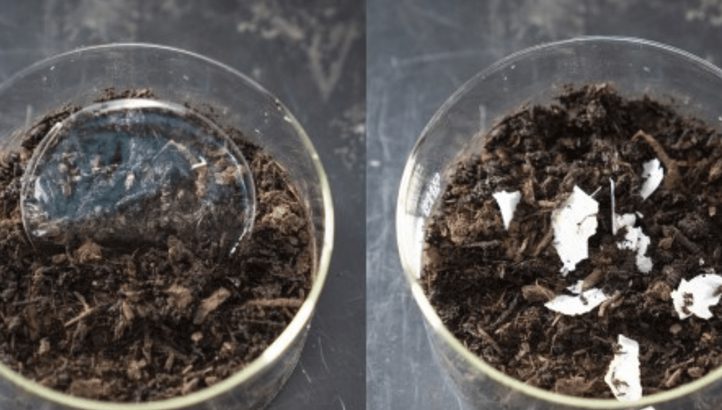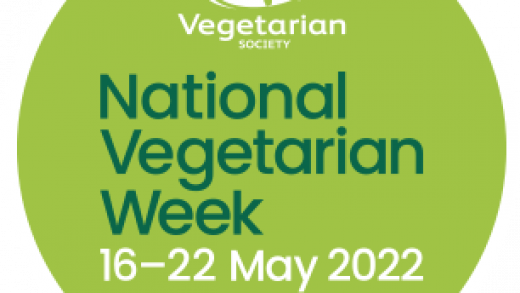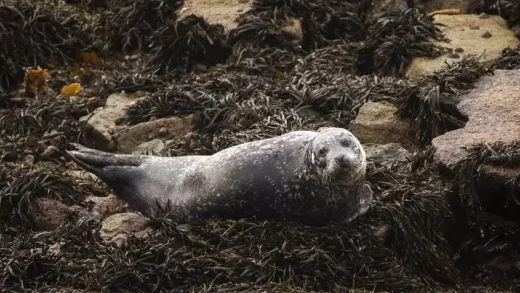It’s likely that only 9% of the 8.3 billion tonnes of plastics to have been made since 1950 made have been recycled. As part of edie’s Circular Economy Week, edie and Springwise highlight nine innovations aiming to help the world produce less plastic and recycle what we already have.
Plastic is an issue that is easy for the public to understand. Consumers hold plastic products in their own hands every day, and footage of marine animals ensnared by plastic waste provokes a strong, emotive reaction.
But weaning our society off plastic is much easier said than done. Plastic materials have useful properties that are difficult to replicate. And plastic is even more embedded in society than many realise. The public often equates plastic with packaging, and it is true that single-use packaging accounts for 40% of annual plastic production. But plastics are also used in a host of other applications such as textiles, construction, and agriculture.
It is clear that an enormous amount of innovation is needed to reduce the impact of plastic. Alternative materials—from popcorn to seaweed—are one promising avenue of development. But from construction blocks made out of waste plastic to re-usable takeaway packaging, we are also seeing innovators create new processes and behaviours for instances where we do continue to rely on plastic.
Here are nine of the most exciting innovations that are helping to reduce our global plastic footprint.
- Edible, kelp-based packaging
Using low-emission manufacturing processes and renewably sourced biomaterials, Norwegian material science company B’ZEOS is working with global corporations to replace single-use plastic packaging with seaweed-based alternatives.
The company’s first product was an edible drinking straw, but its line of alternative packaging has since expanded thanks to partnerships with Nestle and Spanish plastic manufacturer Aitiip. Seaweed does not require any fertilisation, pesticides, or freshwater – which is what makes it such an attractive alternative to other, land-grown, crop-based biomaterials. B’ZEOS’s production processes do not use any toxic chemicals, and the formula for each packaging product is tailored to its final use.
2. A new kind of compostable plastic

San Francisco-based startup Intropic Materials is developing a bioplastic that can be composted at home. According to a study published in Nature, this new material breaks down within days or weeks depending on the type of plastic and the conditions of the compost – such as its temperature.
Normally, microbes use enzymes to slowly ‘eat’ biodegradable plastic. In the case of the new material, however, the enzymes are built into the plastic itself. When the plastic is thrown away, and the humidity and temperature are right, the enzymes are activated.
Because the new material will break down into monomers, it could also be recycled rather than composted. And the embedded enzymes also break down the plastic more completely than microbe-produced enzymes. This is because they go from one polymer chain to the next, rather than breaking down the polymer in random areas. As a result, no microplastic remains following decomposition. This could help overcome the current environmental challenges associated with materials like oxo-degradable plastics, which have been shown to decompose but to leave microplastic fragments as they do, polluting soils and water.
3. Compostable packaging made from agricultural waste

Image: Traceless
Using agricultural waste materials, German startup Traceless has created three new types of packaging. All three are designed specifically as a replacement for high-volume, single-use plastics. The new materials are fully compostable, even at home, and are completely safe to use on food.
The polymers used in the company’s products—a film, a sprayable coating, and a hard plastic alternative—are natural and without any chemical alteration, meaning that they decompose quickly. The hard plastic option can be used in 3D printers, dyed, moulded, and printed. Similarly, the film can also be dyed and printed, as well as heat-sealed.
The company is in the early stages of development, with its technology currently patent-pending.
4. Children’s toys made from recycled rice crop waste
According to The World Counts, 90% of toys on the market are made of plastic. And the toy industry uses 40 tonnes of plastic for every $1 million in revenue. This makes it the most plastic-intensive industry in the world.
Now, South Korean designer Subin Cho has created a children’s stacking game made out of rice husks – a voluminous by-product of rice cultivation. The game makes use of sturdy, brightly coloured pieces that look like wood and are compostable. When a family no longer needs the toy, the pieces can be buried and will fertilize the soil once it is buried.
Rice husks constitute about one-fifth of the total weight of rice, and the enormous volume of the waste material produced each year causes problems for farmers around the world. Using rice husks to make toys, therefore, has further benefits, as it prevents the waste from being burned – an approach with a considerable emissions footprint.
5. Water-repellant building insulation made from popcorn

Image: Karl Bachl GmbH & Co. KG
Plastic is not only found in applications that are consumer-facing for most of their lifecycle. There are also many ‘hidden’ uses of plastic. Building insulation is a good example, with plastic materials or mineral fibres covering around 90% of the global insulation market.
A team from Germany’s University of Göttingen has developed an exterior building insulation material using granulated popcorn. The new insulation is efficient, water repellant, and provides good protection from fire.
Used as part of the exterior shell of a building, the popcorn-based insulation is of a quality equivalent to that of commonly used plastic insulation materials. As the sustainable material made from plants, not only does the popcorn insulation help reduce thermal waste, it also reduces carbon emissions.
6. An alternative to plastic seed coatings

Image: Xampla
Another hidden use of plastic is for seed coatings. These coatings are used to increase the incidence of germination, and protect seeds from pests and diseases. However, while they help reduce the use of pesticides, the coatings are normally made using plastic polymers that are not fully degradable in agricultural soils.
Now, the University of Cambridge spin-out Xampla has partnered with multinational company Croda to develop a natural replacement for microplastic seed coatings. The new coating is made from natural materials, leaves no residue in the environment, and will disappear without a trace once it has done its job of protecting the seed. An initial trial of the coating is expected to take one year to complete.
7. A more circular model for takeaway lunches

In the UK alone, it is estimated that consumers generate 11 billion items of food packaging waste per year – and that’s just from takeaway lunches. Swiss startup reCircle wants to eliminate this mountain of takeaway waste by changing people’s habits. The company has developed a circular system that allows customers to purchase their takeaway food in reusable containers.
ReCircle sells reusable containers to partner restaurants, which pay a fee for membership. The restaurants, in turn, sell the containers to customers with their food. Customers can then trade the empty boxes for filled ones on their next visit, or return the boxes and get their money back.
When the containers have reached the end of their life, reCircle recycles them to create new containers.
8. Enzyme technology to break down plastics

Image: Samsara Eco
Australian startup Samsara Eco has developed an innovative solution that can break down single-use plastics into harmless organic molecules that can be easily recycled or composted.
Enzymes—organic substances that catalyse bio-reactions—are the key to the technology. The enzymes break plastic polymer molecules down into their constituent parts – known as monomers.
Samsara’s process is carbon-neutral and can be performed at room temperature. This is a significant benefit compared to other advanced plastic recycling processes – which require large amounts of heat. The startup, therefore, offers a more sustainable method of recycling, with the company estimating that it will save three tonnes of carbon emissions for every tonne of plastic recycled using its process.
9. Building blocks made from plastic waste

Image: ByFusion
American startup ByFusion has developed technology that compresses discarded plastic waste into blocks that can be used in construction. The eco-friendly process—called ‘Blocker’—uses steam and compression, and does not rely on chemicals.
One of the key benefits of the technology is that, unlike many forms of plastic recycling, the feedstock does not need to be washed or pre-sorted. All types of plastic can be fed into the system, where they are shredded and fused into the blocks – which are known as ‘ByBlocks’.
ByBlocks can be used for applications such as sheds, walls, fencing, landscaping, and furniture. Unlike their concrete counterparts, they don’t crack or crumble, and they also generate 41% less CO2e emissions over the lifecycle.
Source – edie 28/5/22
Edie is the industry-leading, purpose-driven business media brand which empowers sustainability, energy and environmental professionals of all levels to make business more sustainable through award-winning* content and events. empowering sustainable business. www.edie.net
Springwise is the global innovation intelligence platform for positive and sustainable change. With a growing database of 11,000+ innovations, we are the place of record for innovation that matters. Springwise.com.



